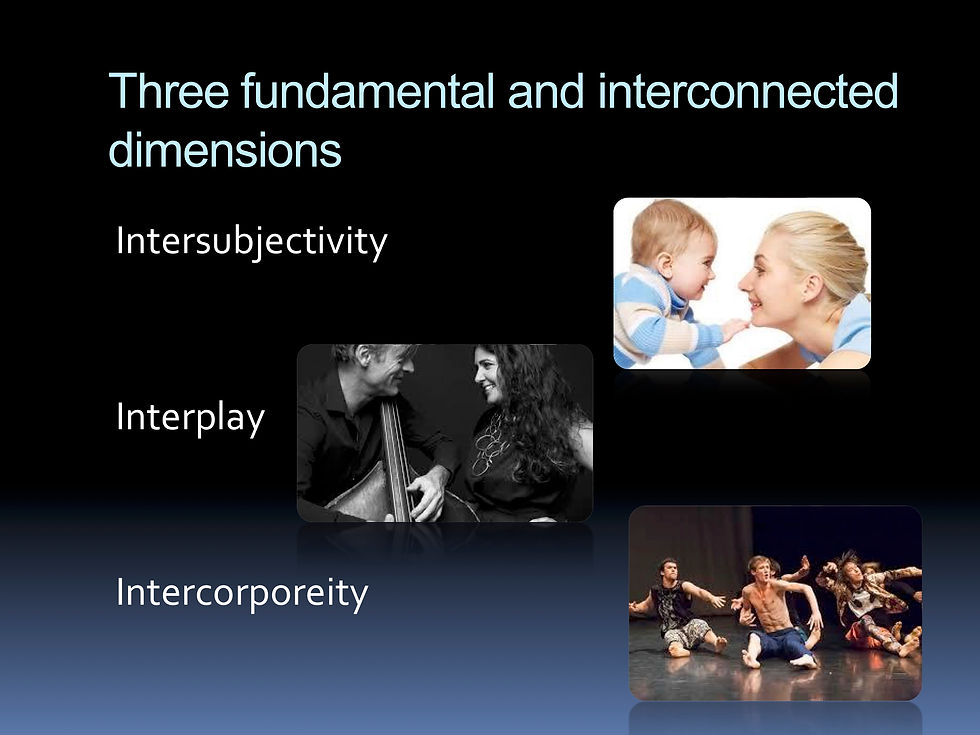
The Midifly System: from play to the interplay, a new road to intersubjectivity
La musicothérapie vise à développer les fonctions potentielles et / ou résiduelles des personnes. Ils peuvent améliorer l'intégration intra et interpersonnelle et, partant, la qualité de la vie grâce à un processus préventif, de rééducation ou thérapeutique. Il existe plusieurs approches thérapeutiques. MidiFly® représente une nouvelle approche pour l’étude des comportements et des solutions thérapeutiques possibles. En particulier, il a été testé chez des patients présentant des problèmes cognitifs tels que l'autisme et d'autres maladies dégénératives. Dans la musicothérapie, le milieu est au centre. Le patient et l'opérateur peuvent interagir en agissant sur la grille virtuelle. Le gril peut être utilisé des deux côtés. Ce fait permet aux utilisateurs de se refléter et d’engager un dialogue sonore fructueux. MidiFly® nécessite une formation adéquate pour son utilisation. À la fin de la formation, l'opérateur reçoit une certification lui permettant d'utiliser MidiFly® en utilisant le protocole "Midifly System".
Le "MidiFly System" est un protocole créé par le Dr Stefano Navone,
Dr. Mariangela Lippolis et Dr. Stefano Ianne.
Tous nos tests et études sont effectués à notre siège à Valence (ES)
et à l'Institut Inartesalus de Schio (Italie)
Les études sont menées et coordonnées par le Dr Stefano Navone.
"Midifly technology: a new relational dimension in rehabilitation with music"
(Navone S. - Lippolis M. - Ianne S.)
Avec l'avènement d'outils informatiques puissants basés sur des capteurs et des systèmes de musique interactifs en temps réel, une attention croissante a été progressivement portée à la combinaison de la musicothérapie avec la sonification, en particulier dans la rééducation neurologique. L’hypothèse théorique de base des auteurs est que le cadre de la musicothérapie active consiste en une corrélation continue entre trois dimensions relationnelles: l’interaction en tant qu’interaction sonore, l’intercorporeité en tant que miroir du corps et l’intersubjectivité en tant que partage d’états émotionnels.
Le "MidiFly System" conçu par les auteurs a pour objectif de devenir le point de référence technologique de cette vision. MidiFly® fournit la projection d'une grille infrarouge virtuelle sur laquelle le patient et le thérapeute, se faisant face par de simples mouvements de la main, peuvent simultanément produire des sons prédéfinis tout en exploitant la symétrie et la symétrie du corps.
La première étape a été l’étude de la faisabilité et de l’acceptation de cette approche dans le cadre d’une investigation clinique préliminaire auprès de patients ayant subi un coup et neglect. Nous nous sommes rendu compte que les possibilités d'application de MidiFly® sont nombreuses, en particulier chez les patients présentant des lésions cérébrales acquises et des déficits moteurs, en tenant compte des bases théoriques des interactions intermodales et de la représentation spatiale de la hauteur du ton.
Depuis avec MidiFly® le musicothérapeute a la capacité de définir la composition de la grille de nombreuses manières, il offre également la possibilité de combiner la rééducation fonctionnelle et la dimension relationnelle dans une thérapie intégrée et personnalisée qui met également l'accent sur la récupération de la motricité, la synchronisation et la sensibilisation. spatial.




The Claudio Ciai Foundation is a non-profit based in Italy that aims to assist with the ongoing support and recuperation of victims suffering brain injuries or permanent disabilities as a result of accidents on the road and/or the workplace. Key goals include:
-
Providing a toolkit of valuable information and resources for families and friends, following four years of intense research and trial-and-error to find a cure and the most humane care possible for Claudio;
-
An information center sourcing and sharing news about innovative research, new technologies, hospitals and assistance centers in Italy and other countries across the globe. Assistance in understanding victim rights and associated compensation as well as financial support from the foundation as available and needed for victims in need;
-
Act as a helping hand and empathetic guide in moments when tragedy strikes to help families and friends of victims identify best solutions and next steps in moments of need, particularly when a loved one is still alive but without the ability to be autonomous.
The foundation is born from the reassurance that even the woes of sadness and suffering can be transformed into a positive energy of love and kindness, providing a beacon of hope for those in need in their darkest moments.







